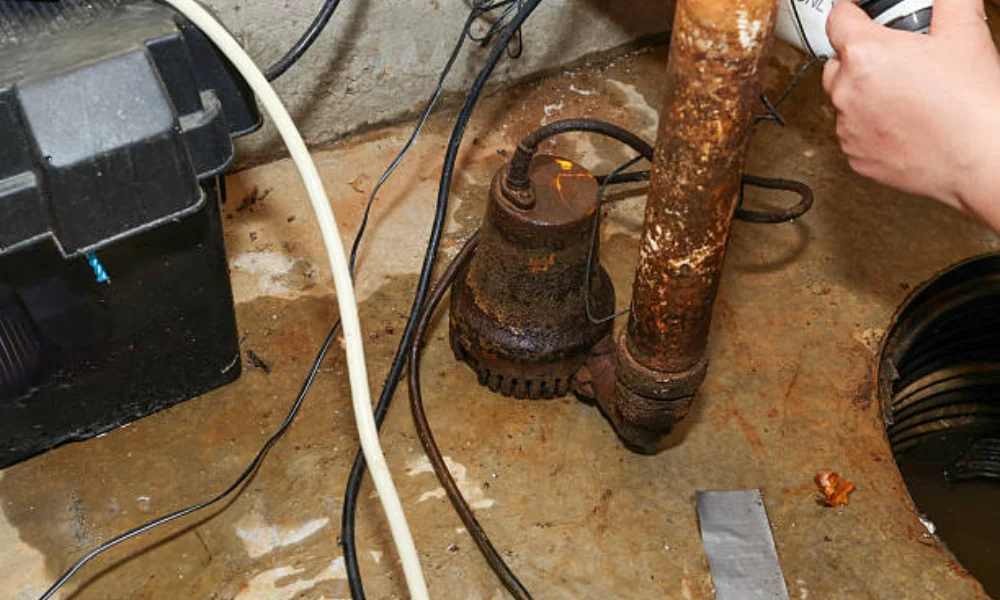
A sump pump protects your home from water damage. But it can only do its job if it stays clean. If dirt and sludge build up, then the pump may fail when you need it most. That is why every homeowner should learn how to clean a sump pump. Cleaning helps prevent clogs. It also stops bad odours from spreading through your basement. In this guide, you will find practical tips that make the job easier.
A garbage disposal is a modest but powerful tool in the kitchen. It saves time, eliminates waste, and keeps the sink free of leftovers. Even the hardest disposal can lose its bite with time. That’s when homeowners start wondering how to sharpen garbage disposal blades without replacing the entire appliance. The solution is simple, but it does need some knowledge.
Why Cleaning a Sump Pump Matters
Prevents Clogs And Pump Failure
A sump pump works by moving water out of the pit and away from your home. Over time, mud, silt, and small stones gather inside the pit. If they are not removed, they clog the screen and the motor struggles to work. This often leads to pump failure. Regular cleaning is essential for maintaining a smooth water flow.
Reduces Risk Of Basement Flooding
If the pump clogs during heavy rain, then water has nowhere to go. It overflows and seeps into your basement. Floodwater ruins the flooring, walls, and stored belongings. Cleaning the pump reduces this risk. It makes sure your system runs at full power when storms arrive.
Extends The Life Of The Sump Pump
Like any appliance, a sump pump lasts longer if you care for it. Removing dirt and residue reduces stress on the motor. This lowers the chance of breakdowns and saves you from expensive replacements. A clean pump gives you peace of mind knowing your home is protected.
How to Clean a Sump Pump
1. Turn Off the Power and Unplug the Pump
Always start with safety. Switch off the breaker connected to the pump. Then unplug it. This prevents shocks while you work.
2. Disconnect and Remove the Pump from the Pit
Lift the pump carefully and place it on a plastic sheet or bucket. This keeps your floor clean. Removing it gives you full access to all sides.
3. Clean the Exterior of the Pump
Rinse off loose dirt using a hose or bucket of water. Use a soft brush to scrub away grime. Avoid harsh chemicals as they damage the unit.
4. Remove and Rinse the Pump Screen or Grate
The screen or grate blocks large debris. Pull it out and rinse it thoroughly. If dirt is stuck, then use a small brush. A clear screen helps water flow freely.
5. Scrub and Rinse the Sump Pit
Scoop out standing water with a wet/dry vacuum or bucket. Use warm, soapy water to scrub the walls of the pit. Rinse until the water runs clear.
6. Reassemble and Reconnect the Pump
Place the screen back in position. Lower the pump into the pit. Reconnect the pipes. Plug it in and turn the power back on. Pour water into the pit to test if it works properly.
How to Clean a Sump Pump Without Removing It
When This Method Is Appropriate
Quick Cleaning Between Full Maintenance
Sometimes you may not have the time or energy for full removal. A lighter clean can help keep the pump running until the next deep clean.
When Removing The Pump Is Not Practical
In some homes, the pump is hard to remove. In these cases, you can still do partial cleaning to prevent blockages and smells.
Steps for On-Site Cleaning
1. Use a Wet/Dry Vacuum to Remove Debris
Place the vacuum hose in the pit and suck up dirt and sludge. This clears most of the mess without lifting the pump.
2. Scrub Accessible Surfaces
Use a long-handled brush to reach the walls and pump casing. Scrub off any visible grime.
3. Flush with a Cleaning Solution Safely
Mix warm water with mild detergent. Pour it around the pump to flush out residue. Do not use strong chemicals as they harm the pump.
Knowing how to clean a sump pump without removing it saves time. It also keeps your system fresh between major cleans.
How Often Do You Need to Clean a Sump Pump?
Recommended Cleaning Schedule
Light Cleaning: Every 3–4 Months
Vacuum debris and wipe down the pit every season. This keeps things under control.
Full Deep Cleaning: Annually
Once a year, remove the pump fully and give it a thorough clean. This prevents long-term build-up.
Adjust Based On Water Table And Usage
If your pump runs frequently during wet months, you may need to clean more often. Always check the pit after heavy rainfall.
How to Eliminate Odour from a Sump Pump
Odour-Removal Techniques
Cleaning and Disinfecting the Pit
Scrub the pit with warm water and detergent. Rinse well. This removes bacteria that cause bad smells.
Adding a Small Amount of Bleach Solution
Mix one cup of bleach in a bucket of water. Pour it into the pit. This kills odour-causing germs. Do not use too much bleach, as it harms the pump.
Ensuring Proper Drainage and Ventilation
Keep the pit dry between pump cycles. Make sure the cover fits well and the area has airflow. This reduces musty smells.

FAQs
How Do I Know If My Sump Pump Is Clogged?
You may hear the motor running, but little or no water moves. You may also see water rising in the pit. This means the screen is likely blocked.
What Is the Best Thing to Clean a Sump Pump With?
Warm water and mild detergent are best. They are safe for the pump and effective at removing dirt.
How Do You Dissolve Grease In A Sump Pump?
Use a small amount of vinegar mixed with water. Let it sit for a few minutes, then scrub. Vinegar breaks down grease without harming the pump.
Can I Put A Chlorine Tablet In My Sump Pump?
It is not recommended. Chlorine tablets are too strong. They corrode parts and shorten the pump’s life.
Schedule Professional Sump Pump Cleaning with Wally Blanton
While homeowners can do basic maintenance, some tasks are best left to experts. Professional cleaning ensures every part of the pump and pit is free from dirt and residue. Wally Blanton offers sump pump services that protect your home from flooding and odour problems. Schedule your service today and keep your pump running smoothly. Knowing how to clean a sump pump is useful, but regular professional care gives you extra confidence that your home stays safe.
